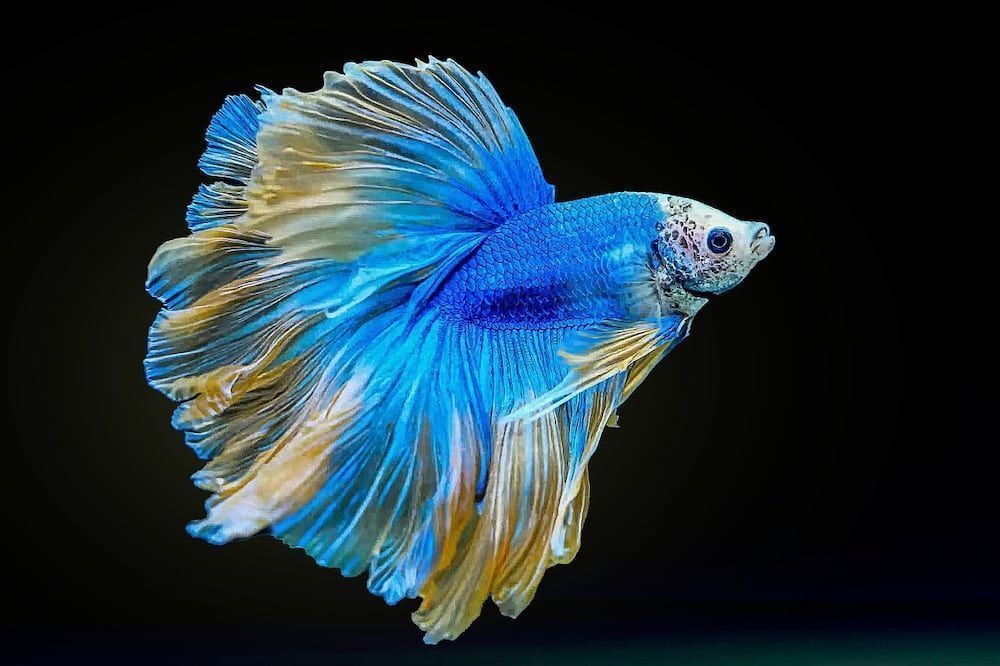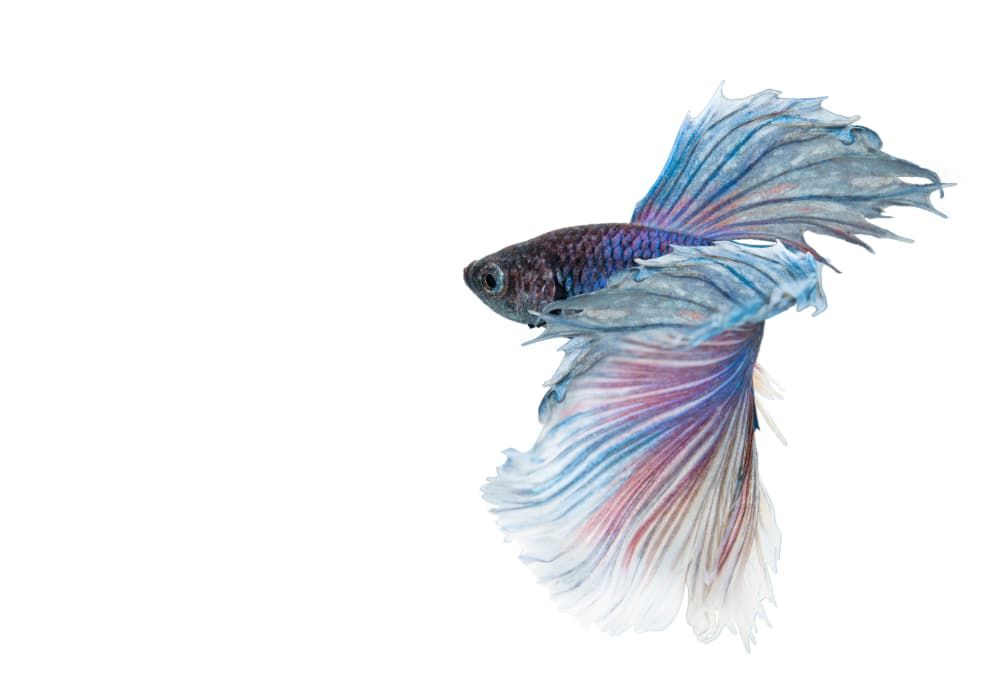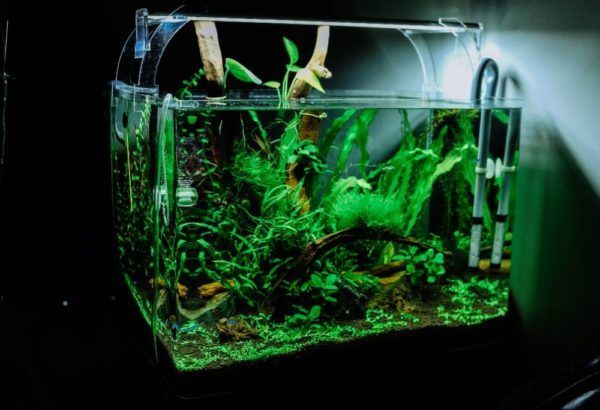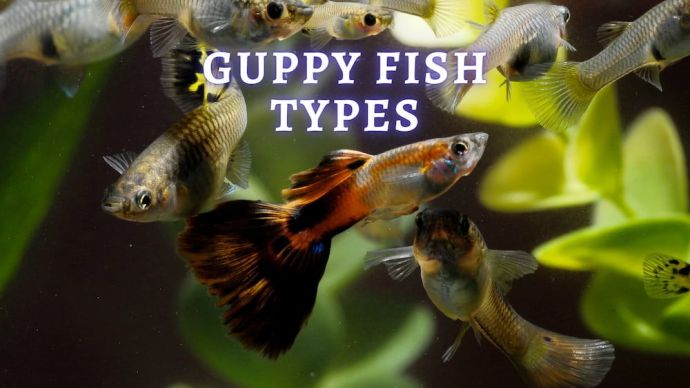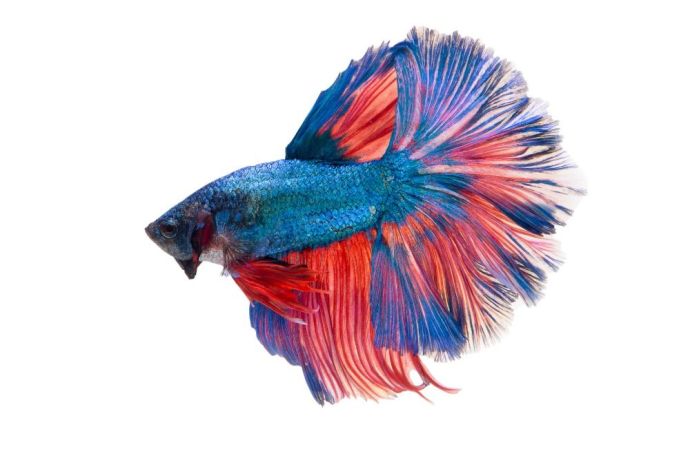Halfmoon Betta Fish Overview: History, Appearance and Care
Written by:
Author: Scott Jeffrey
Scott is a professional blogger with 12+ years of experience in writing, and holds an MA in anthropology. He has two cats as housemates. Also, Scott is passionate to research on pet-related topics such as dog training, puppy feeding, and cat health.
View all 63 articlesLearn about our editorial process and veterinary review board.
Viewed: 285
Updated on: 02/03/2023
The Halfmoon betta is a beautiful species of fish native to Southeast Asia and found in the shallow waters of Thailand, Cambodia, Laos, Vietnam, and Malaysia. It is characterized by its distinctive tail shape, which looks like a half-moon when spread outwards, and can be one of the most stunningly vibrant creatures to witness swimming in an aquarium. With their bright colors and unique tail shape, these beautiful fish are one of the most sought-after varieties among aquarists.
Origin Of The Halfmoon Betta
The Halfmoon betta has evolved from the wild Bettas of Southeastern Asia since the 19th century and was bred for its long sweeping tail that looks like a half moon when fanned out. This form was created by cross-breeding various species within the genus Betta, such as the Betta splendens, or Siamese fighting fish. While there are many variants in coloration and fin shapes across different breeds, all Halfmoons have their signature half-moon-shaped tails.
The half-moon betta is a fish known for being highly active, intelligent, and quite aggressive. Providing plenty of hiding spots and decorations is essential to keep it safe. They don’t always do well when placed in a tank with other fish, and this is due to their dominant behavior.
The breed’s history notes the fish being a source of entertainment in Malaysia and Thailand, where they got called Siamese fighting fish. The halfmoon betta is just one type of doubletail bettas that was coveted for its fins and their aggression. Today these gorgeous fish are used more as solitary fish for small gallon tank conditions. They are known for their long flowing tails and for being fairly low-maintenance fish if tank water conditions are met.
The Halfmoon Betta’s Natural Habitat
In their natural habitat, Halfmoons live in slow-moving streams and rice paddies ditches with heavily vegetated banks that they use as hiding places from predators. These habitats provide them with plenty of food sources like insect larvae and small crustaceans and plenty of space to swim freely without being disturbed.
They can live in warm water environments and breath surface air using their labyrinth organ in the wild. They are tropical fish, and they thrive in water that is 72-81 Fahrenheit. Keeping them in cooler water can be dangerous and cause them to become stressed or ill.
As such, aquarists need to recreate this kind of environment for their Halfmoons if they wish to ensure a long, happy life for their fish friends!
Do Halfmoon Bettas change color?
One unique trait about the theHalfmoons that makes them stand out amongst other breeds is their ability to drastically change color based on specific environmental factors such as water temperature or light intensity. Also known as ‘metamorphosis,’ this ability allows them to take on entirely new colors depending on how much care they receive and what type of setting they are kept in!
As they age, the colors of Halfmoon will deepen and become more intense, making them an even more exciting fish to look at. Despite their ability to change colors, these bettas tend to maintain the same base color throughout their lives. This means that any changes they make are subtle rather than drastic. Someone visiting you who hasn’t seen your fish in a while may notice the difference more clearly than you do, but it will often take months or years for your fish to change dramatically.
Halfmoon Betta Care Guide
If you are a new owner of a Halfmoon betta, you should be aware of the different care guidelines to ensure your fish’s health and happiness. Here are some top care instructions for caring for your half-moon betta so that you can help them enjoy a safe and healthy time at home.
Tank Size:
An appropriate tank size would be 5 gallons or less due to their smaller size; larger tanks are recommended if you plan on having extra fish. If you plan on having other fish in the tank with your half-moon betta, it is best to introduce a larger tank and some areas where your betta can have some space and privacy. Introducing a filter and heater can also help to keep the tank clean and at an optimal temperature for your fish’s health.
Tank Habitat:
Aquascaping should aim at replicating natural environments as closely as possible with heavily planted areas offering protection from predators; driftwood pieces also help create visual interest for your fish friends!
One of the best ways to improve your tank’s habitat is with the help of natural plants. These are a great way to add texture, color, and cover to the tank. Artificial plants are also an option but may not be as appealing, and some bettas might decide to snack on them. A natural plant can help reduce toxins in the water and give you a fast indication of tank health.
Lighting and a thermometer must also be set up to ensure the water temperature stays in the correct range. Setting up a thermometer with an internal probe that displays readings digitally is often recommended. As the half-moon betta is a tropical fish, it will need to have the water temperature managed.
Keeping your tank away from natural light will also ensure that you can reduce algae and bacteria growth. Artificial light is usually a better option as it can be adjusted to match the natural daylight cycle and provide your betta with an optimal amount of light.
When introducing any new tank element, ensure it is safe for your fish and has no sharp edges. It should also be aquarium-safe and non-toxic. Rinse the item down with a light bleach solution to prevent the chance that you could bring in new contaminants through your inclusion.
After setting up your tank habitat, don’t introduce your half-moon betta fish immediately. Always be sure to place your betta fish into the tank in its bag or the container it was sold in. This will help the fish acclimate to the new water temperature.
Tank Maintenance:
Regular water changes are essential to keeping a healthy environment; siphoning out old water every two weeks will keep nitrates low and encourage good bacteria growth, which helps keep disease rates down.
Most half-moon betta owners develop a weekly cleaning schedule where they will take out at least 25% of the water and then replace it with fresh, dechlorinated water. This will help to maintain a good balance of minerals and pH levels in the tank. Treating the water in the tank with a ph balancer or de-chlorinator will also help ensure the health of your fish. You can often use drops to put into the water and improve the condition of your water. Do not use overly salted water with bettas, as they thrive in salt water, and make sure that you have PH strips available to check the water parameters.
It is essential to clean any tank décor that might be present in the tank regularly; remove and rinse all decorations with hot water and use a heavily diluted bleach solution of 9-1 part bleach for items made of plastic or fabric. Always remember to rinse thoroughly before replacing them in the tank.
The dirt that develops in a fish tank is often unseen. Chemicals like ammonia can build up over time, and to remove it, you may need to use a water conditioner and keep a regular tank maintenance schedule. When removing significant amounts of water from the tank, always remove your fish and reacclimate them to the water. An aquarium vacuum can help with cycling out the gravel and keeping the base of the tank area clean. These special tools can speed up maintenance and keep your tank cleaner for your pets. Betta fish tank are generally small, but cleaning tools can help you reach into difficult areas or treat your halfmoon bettas to even better tank conditions. Performing a one-month deep clean of the tank by removing your fish will help you to clean all the unseen areas in your tank and keep your fish at their healthiest.
Halfmoon Betta Diet:
In terms of food sources, these fish generally prefer a carnivorous diet. They get most of their food in the wild from live fish and insects, and wild betta fish will thrive in conditions where they get regular insect larvae, crustaceans, and zooplankton. These items will be replaced in a tank with commercial pellets, freeze-dried food, and high-quality frozen foods.
Freeze-dried brine shrimp, ants, daphnia, and black worms are excellent protein sources for the half-moon betta; commercial fish food flakes are suitable for bettas. You may be able to find a specialty pet store with soldier fly larvae or live brine shrimp, but generally it is easier to feed a halfmoon betta regular healthy fish food. Ensure all food is fresh, and provide only small, frequent meals of around five pellets or flakes per day. Adding various sources to their diet will help ensure your betta receives adequate nutrition.
It would be best to feed your half-moon betta one to two times a day in small portions that they can consume within two minutes. Be sure not to overfeed them, as this can lead to bloating, which can be dangerous for the fish. Half-moon bettas have very small stomachs, and they will eat without any off switch. Feeding them at the same time every day will help a half moon betta to adjust and establish a routine.
Is it okay to hand-feed a halfmoon betta?
Yes – depending on how tame your pet has become, they may appreciate hand feeding more than other methods, as this strengthens relationships between pets and owners! As these fish can rise above the water surface to take food, try using a long spoon or tweezers to hand feed them.
Half Moon Bettas may begin to expect you to feed them in this manner, so it is essential to have other options available to ensure their health does not suffer.
In some regards, hand feeding can be safer for the tank environment as spent food will not have the chance to fall into the tank and rot. When feeding your half-moon betta by hand, you must ensure that you have clean hands and that you are not contaminating their food with harsh soaps or lotions. Please take caution when touching any part of a fish, their food, or the tank, or you could contaminate them or the tank.
Male vs Female Halfmoon Bettas:
Males have bigger fins than females in halfmoon beta fish though their colors may vary depending on where they originate. Females usually display more subtle shades; both genders grow up similarly though males tend to be more aggressive towards each other if housed together, so separate tanks are recommended unless for breeding purposes.
Telling the difference between the two for breeding purposes is relatively straightforward. The male halfmoon betta is often more aggressive, and they have larger fins than a female betta. Female halfmoon bettas are much more likely to swim peacefully without disturbing other fish. The female fish also have duller color patterns and a smaller dorsal and tail fin. Halfmoon males keep the larger fin pattern and the brighter colors in the wild to woo in females and drive off rivals.
Stocking HalfMoon Bettas with Other Fish
Although some aquarists make it work – stocking these fish with others isn’t always ideal due to their highly territorial nature; it’s best advised that if you wish for peaceful coexistence, then keeping them solo in individual tanks would work best; otherwise, introductions should happen slowly & carefully under supervision ensuring no aggression occurs between inhabitants! They are the prettiest tropical fish species but can be territorial among male bettas.
It is usually best to stock only female halfmoon betta fish in a tank with other fish as they are less aggressive than males with large fins. Most half-moon females are fine to coexist with other fish species. Make sure to try out any new fish with other betta fish or consult betta breeders on fish that have worked in the past with other fish tank setups they have had.
Common Disease & Infections Affecting Halfmoon Bettas
As with any pet, there can be some health risks associated with improper care resulting in various diseases & infections affecting your pet halfmoon betta – here are some common ones along with prevention methods against them:
Fin Rot –
Caused by poor water conditions leading to bacteria growth at the base/edges of fins; regular tank maintenance (water changes/gravel vacuums) helps prevent chances of an outbreak. Fin rot can be curbed back, but once it starts, you must monitor your fish closely to ensure they can keep swimming well. When tail rot sets in, it can be tough for them to use their flowing fins and survive to eat normally.
Velvet –
Caused by protozoan parasites which attach onto scales causing gold/brown spots along the body; quarantine new arrivals/perform significant water changes immediately if symptoms exist
Ick –
Caused by tiny parasites often living under slime coat, medicated dip baths while treating an entire tank+improved diet helps combat infestation. Drops are available for Ick, but catching early cannot be easy.
How long can Halfmoon Betta fish live with correct care?
If given proper care & provided favorable conditions, then Halfmoon betta fish can live up to 3-5 years or more! To keep your pet in the best of health, always ensure you have the correct water parameters & diet for them as well as regular tank maintenance – this will help increase their lifespan significantly.
READ MORE: Betta Fish Tank Mates
Conclusion:
Overall, Halfmoon bettas are an exciting & beautiful fish species that require just as much love & attention as any other pet – with the proper care; they can be a great addition to any home aquarium. With the tips in this article, you can introduce your half-moon betta to a great home and provide them with everything they need to survive peacefully.
Good luck with your new pet, and happy fish-keeping!
FAQ:
Are Halfmoon Bettas rare?
Halfmoon bettas are rare and typically more expensive than other fish species. They can be found in specialty pet stores or online aquatics suppliers. The rarest form of the half-moon betta is the one with koi coloring and marble coloring. These are the types of half-moon betta with which you see the most drastic color changes.
How long do Halfmoon Bettas live?
Halfmoon bettas can live up to 3-5 years or more with proper care and maintenance. To ensure your half-moon betta has a long healthy life, it’s essential to provide them with the correct water parameters and diet and perform regular tank maintenance.
What other fish can live with Half-moon Bettas?
Halfmoon bettas can be kept with other non-aggressive fish species in the same tank, but it is best to introduce them slowly and carefully. It is best to choose only aquarium fish that are freshwater fish. It’s also essential to ensure no aggressive tendencies between inhabitants, as halfmoon betta fish are highly territorial. Other peaceable fish species such as guppies, mollies, plays, and other small schooling fish can co-exist in the same tank with halfmoon betta fish. It’s best to avoid any aggressive or large species that could harm your Halfmoon. Additionally, placing two betta fish in the same tank is not recommended, as they will likely fight. It’s best to keep them in individual tanks.
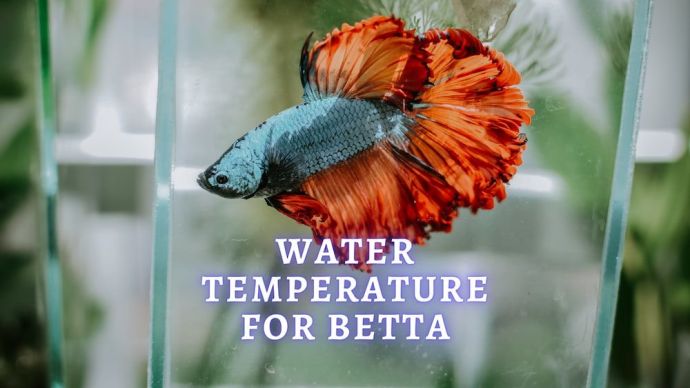 Freshwater Fish Betta Fish Temperatures: Guide To The Perfect Betta Fish Water Temperature
Freshwater Fish Betta Fish Temperatures: Guide To The Perfect Betta Fish Water Temperature - 252
- 0
 Freshwater Fish Snail Eggs in Aquarium and What to Do with Them and How to Remove if Needed
Freshwater Fish Snail Eggs in Aquarium and What to Do with Them and How to Remove if Needed - 92
- 0
 Freshwater Fish The Best Freshwater Aquarium Fish: TOP-15 Freshwater Fish for Fish Tanks
Freshwater Fish The Best Freshwater Aquarium Fish: TOP-15 Freshwater Fish for Fish Tanks - 232
- 0











